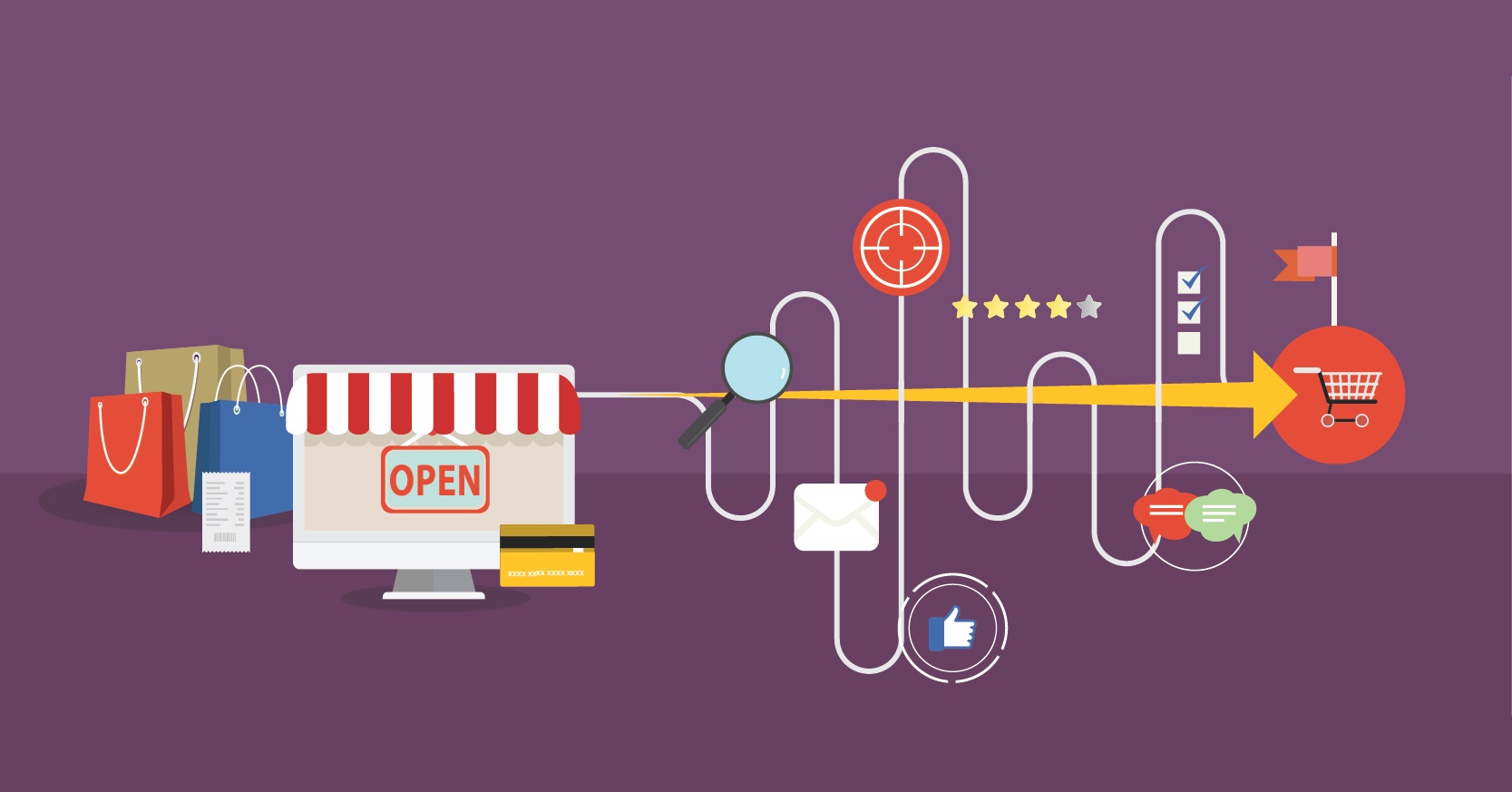Terri Mock is the Chief Operating Officer at Cybba. She is responsible for driving Cybba’s revenue growth, go-to-market, and commercial operations. Terri’s expertise is in performance marketing, digital advertising, SaaS, and ecommerce. She has over 15 years of experience in the design and optimization of media and marketing strategies.
Managing the Customer Journey
Managing the customer journey is central to the customer experience of a brand. The sequence of interactions that make up the classic customer journey move from Awareness, Consideration, Conversion to Retention.
Typically, when you want to improve on the efficiency of the classical approach, you look at specific pain points and you try to fix them. You implement solutions to work on the 10-30% of users that stay in your sales funnel. Once someone leaves their journey, you lost that abandoned user, and you must work to acquire them all over again.
When we look to improve your customer journey strategy, the aim is not just to fix specific pain points, but to significantly expand your engagements with web visitors and make the conversion process more efficient. First, you need to look at the customer journey on a holistic scale, from end to end. This starts from when you first acquire the customer and they gain brand awareness of who you are, to when they complete a conversion, whether it is to fill out a form on your website or make a purchase online.
Second, if you look at your web traffic, not everyone that comes to your site engages and then converts. A large majority of visitors, between 70-90%, abandon. The lost revenue in abandoned shopping carts was equivalent to $4.6 trillion in 2016. You can expand your existing journeys by re-engaging these abandoners. The point is not to cycle these abandoners back through the whole acquisition process, but to drop them back to complete their journey and drive conversions. This approach expands the customer journey and increases the conversion efficiency.
There are 4 interconnected strategies to streamline customer journeys and make them "stickier".
Moment Marketing
The first strategy is micro-moment marketing. The key for moment marketing is the idea that you have only 8.25 seconds to capture the attention of your target consumer. In those few seconds, brands are challenged to send valuable insights, special offers or exclusive experiences to draw in the consumer. 73% of consumers say getting useful information is the most important criteria when selecting a brand. Even if there is not an immediate direct response, these moments of interaction are important to establish mindshare for your brand and will make a difference on consumers over time. To get the attention of your potential customers, create touchpoints that can be easily digested by the consumer across digital channels, whether it is a display ad, paid social, SEM, onsite engagement, email remarketing, or retargeting ad. For moment marketing, intent, context and speed count for everything.
Here are some micro-moment examples:
- Onsite Engagement: Show online messaging of best-selling products, or complementary products to re-engage shoppers at the point of abandonment. If your shopper is looking for a dress, suggesting shoes, handbag, and accessories make it easier for her to find a complete outfit.
- Email Remarketing: Send post-abandonment emails cascaded after 30 minutes, 24 hours and 48 hours. Include products in the abandoned cart and bring the user back to where they were in the checkout process.
- Display Ads: Show retargeting ads with recently viewed products, or carousel of similar products while user is reading online news the next day.
Proactive Personalization
With proactive personalization, we use information gleaned from past or current interactions with a customer to customize their shopping experience. Companies that offer personalization see an average uplift of 19% in sales. Proactive personalization can be built around countless aspects of the customer experience:
- Onsite Engagement: Based on buyer profile, use different messaging and imagery to reach your target audience. For example, personalization can be applied to segment your website visitor as a caregiver or a senior looking for a medical alert device.
- Email Remarketing: Use criteria filtering to determine alternative promotions. For a high-end decorative lighting store, if the basket total exceeds $1000, offer a free desk lamp. If the basket total exceeds $500, offer complimentary express shipping. If the basket total is less than $500, offer free standard shipping. In addition, recommend spare parts, halogen bulbs, wall attachments, dimmers, etc. to increase the Average Order Value.
- Display Ads: Use hyperlocal geotargeting based on info about the city where the user lives. For a ticketing site, show product recommendations from a list of attractions in the same city.
Contextual Interaction
This is where you use the knowledge of where the customer is in terms of the customer journey to serve up relevant messaging. This can refer to the physical location of a consumer entering an auto dealership, or a virtual location of where the consumer is surfing online or reading content.
A recent study states that only 2.8% of participants said they thought that ads on websites were relevant. That is a rather low percentage, especially as we consider how much is spent on paid media. The problem may be that the ad is not being shown to the right person at the right time, rather than the ad itself is not good. To improve the customer experience, we need to change from the one size fits all approach. Instead, adopt ad campaigns that interpret the semantic relevance of sites, and place ads that prioritize who, what, where and when a customer interaction takes place.
Here is an example of contextual targeting working for a prominent university to drive leads to their online MBA program: Identify profiles of professionals in the city who work for top companies. Then show prospecting ads to this targeted audience highlighting executive MBA seminars in the business publications they are reading. As another example, use geo-targeting around auto dealerships to serve prospecting ads for auto insurance when consumers go to shop for new cars.
Connected Experience
The average customer makes 9.5 visits to a website before buying so it is important to provide a seamless experience across all interactions. Since the customer journey is not linear, data on purchase intent, behavior patterns, demographics, and past transactions should be used to personalize targeting and messaging to each customer. 84% of marketing executives say they plan on developing a process to map rich media content assets to buyer journey stage. This is important to reinforce branding, ensure an intuitive user experience across devices, and deliver messaging and promotions to move the purchase decision forward.
Utilizing these 4 strategies to streamline your customer journey will have a significant impact on how your company attracts, retains, engages, and ultimately converts your customers.


